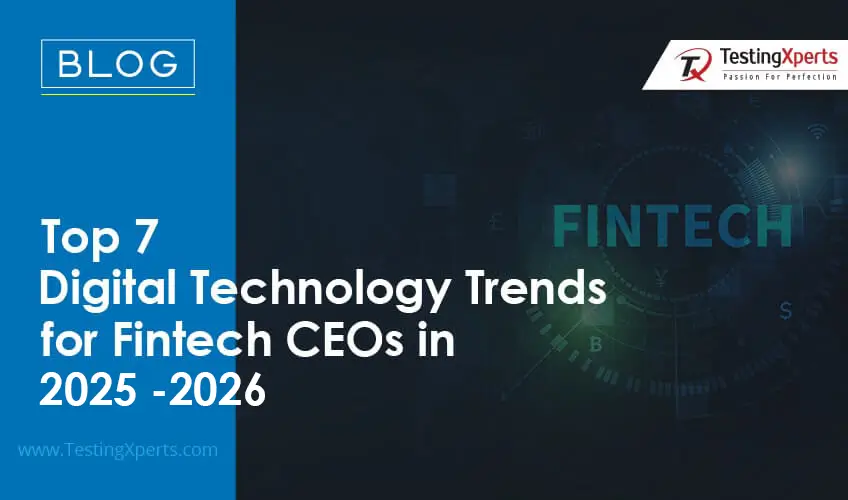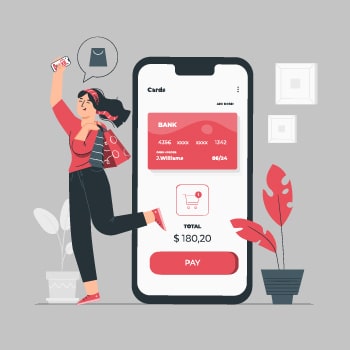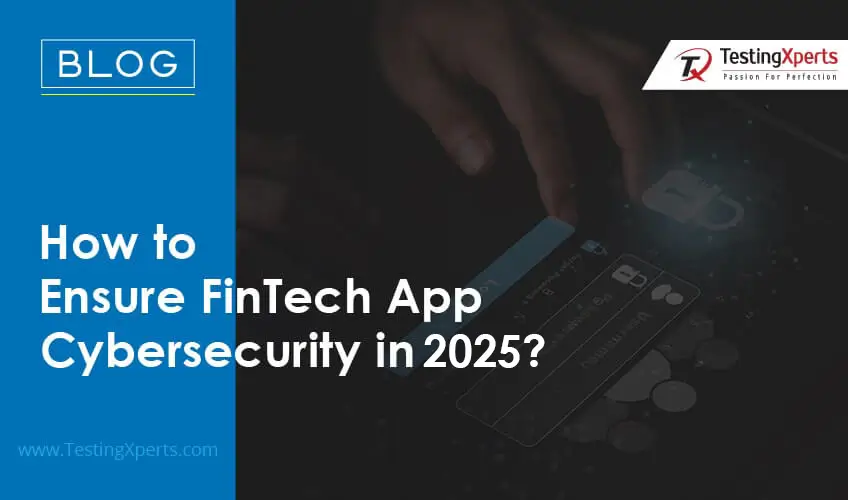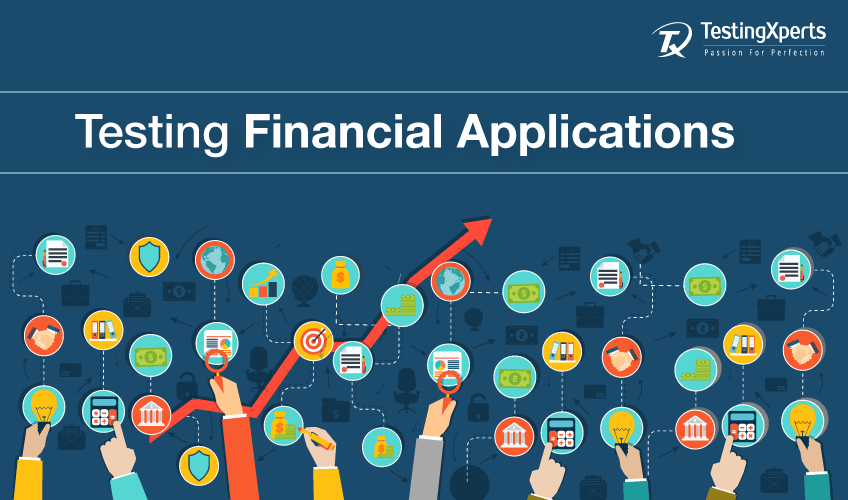 1.Digital Technology Trends for Fintech CEOs in 2025-26
1.Digital Technology Trends for Fintech CEOs in 2025-26
1.1 Open Banking
1.2 Blockchain
1.3 Embedded Finance
1.4 Super Apps
1.5 Voice Payments
1.6 Robotic Process Automation (RPA)
1.7 Virtual Cards
2. Conclusion
3. Overcome the Challenges of FinTech App Testing with TestingXperts
The FinTech landscape is evolving faster than ever, with radical innovations disrupting the market now and then. FinTech CXOs and investors must keep an eye on these transformations and technology trends as they influence everything related to payments, money, and banking. With customers looking for on-demand finance, it is evident that people are more comfortable managing their finances online and are slowly moving away from the bureaucracy of traditional financial services. Today, financial organizations are embracing the agility and flexibility promised by FinTech solutions to modernize their existing business models and develop innovative financial products.
Digital Technology Trends for Fintech CEOs in 2025-26

So, what technology trends should FinTech CEOs look out for that will influence the customers’ decision-making in 2025-26 and beyond? Here are the top 7 predictions concerning the technology trends of the FinTech industry.
Open Banking – Technology trends

Open banking is an initiative by which banks share clients’ data with FinTech companies and other financial institutions via secure APIs. Now, an obvious question arises as to why banks would share their sensitive financial data with other institutions. This data sharing enables banks to stay competitive, provide security, transparency, and offer personalized finance management.
Along with the users, financial institutions are also on the receiving end when it comes to gaining benefits from open banking. For instance, finance lenders get details of the risks involved in lending to clients and personalize the loan interest rates per client profile. With open banking, FinTech businesses can enable their customers to send, receive, and save money from their preferred bank accounts. Users can also access various bank accounts from a single application.
Blockchain

Market research by PRNewswire reports that the blockchain market will be worth $67.4 billion by 2026. One of the key reasons for the emergence of the Blockchain trend is that blockchain-verified data is secure. Blockchain algorithms protect financial institutions from fraudsters because all the transactions are recorded and checked by all nodes in the network. In case of intrusion attempts, Blockchain technology makes it easier to track and identify the hacker.
Along with providing a secure platform for financial transactions, Blockchain is enabling faster international transfers with a minimum commission. Proper blockchain implementation can allow fintech businesses to make their product stand out in terms of speed, security, and efficacy. Being one of the top technology trends for FinTech CEOs to look out for, transactions with these merits can help FinTech organizations make a mark in the Finance ecosystem.
Embedded Finance

Embedded finance is another key emerging trend that many financial businesses are adopting. Embedded finance enables non-financial organizations to leverage digital technologies to offer financial solutions to their customers.
Unlike reselling financial services, embedded finance is attracting digital service providers as it creates new revenue channels at a low marginal cost. With the embedded finance market predicted to be worth $ 7.2 trillion by 2030, this digital technology trend will enable new customer experiences that boost brand loyalty and repeat purchases. Following the successes of Plaid, Square, and Stripe, FinTech CEOs, VCs, and entrepreneurs are gaining more interest in this market and are pouring more efforts into it.
Super Apps

Super Apps is another digital technology trend that is making noise in the FinTech industry in 2025-26 and beyond. The Super App brings many apps with varied functionalities into one ecosystem, such as messaging, placing an order, making payments, shopping, and even making appointments. The fundamental principle for a super app is – one app, one sign-in, and one user experience for any kind of product or service.
WeChat can be credited for successfully experimenting with the idea of a Super App. A messaging app at first, WeChat has now enabled its 1.25 billion users to perform a plethora of tasks such as transferring money, taking out loans, and much more. Following the success model, WhatsApp is experimenting with banking features in India and South America, and PayPal looks forward to merging payments, crypto, and shopping in one place.
Voice Payments

Statista predicts that by 2025, there will be more voice assistants (8.4 billion devices) than people worldwide. People have shown keen interest in using connected devices for their day-to-day activities such as searching for information, listening to music, shopping online, and more. Voice biometrics will become reliable protection of the user’s data.
In 2025-26, FinTech organizations will continue to make their customer experience completely hands-free. By integrating voice biometrics into their applications, app users can check their account balance and make payments by voice commands while simultaneously doing something else. Manual data entries will be replaced by voice technologies, improving the accessibility of financial services, especially for people with disabilities.
Robotic Process Automation (RPA)

Financial organizations employ RPA to automate human interventions and accelerate business processes. RPA in finance takes over repetitive and mundane tasks by learning from the actions performed by the user in a graphical user interface (GUI) and then repeating those actions when required.
FinTech businesses can leverage RPA to deploy a “robot” that takes on repetitive tasks such as data entry, data storage, data management, reporting, insurance claims, ticket generation, and so on.
Virtual Cards

Virtual cards are becoming one of the safest modes of payment for goods and services. The user pays for goods with a temporary 16-digit card without indicating the information of a physical bank card. Virtual cards are stored in digital wallets on mobile devices and are used for contactless payments. If required, a virtual card can be instantly blocked without losing access to the physical bank card.
The evolution of digital technologies and the need for robust solutions prior to the pandemic led to a growth in virtual cards to nearly $200B in North America. According to Visa, this growth will continue to rise, and the virtual card market value will reach up to $500B by 2025
Conclusion
The 2025-26 Fintech trends listed above are becoming the driving forces of the Finance industry’s development. Thanks to modern technologies, banks and other financial institutions can extend their customer experience capabilities by improving their service delivery models, maintaining the brand reputation, and attracting new customers. FinTech CEOs, VPs, and investors can make sure that they are investing themselves and the organization into the right trends by considering the following:
Empower customers with latest technology trends –
To match the advanced needs of today’s customers, banking & finance products and services should be adjusted to their behavior/preference.
Leverage the value proposition of products –
Modern technology trends and methodologies mentioned above should be used to enhance data analytics, create customer-centred business models, and promote secure data sharing within the fintech ecosystem.
Embrace the value of information –
Real-time information is an asset to fintech organizations. Trends such as open banking, super apps, blockchain etc. allow banking and finance businesses to process huge amounts of information and utilize it to create innovative products and services as per the anticipated customer needs.
Overcome the Challenges of FinTech App Testing with TestingXperts

Tx’s Banking Financial Services and Insurance Center of Excellence (Tx BFSI CoE)
TestingXperts’ dedicated BFSI CoE focuses on offering a comprehensive range of solutions for testing FinTech applications, which includes tests across key segments in the industry. The CoE is built across the key pillars of People, Processes, and Technology to ensure the right skills, competencies, tools, frameworks, re-usable business scenarios/ test cases, methodologies and infrastructure are in place.
Tx’s Enablers to Accelerate Quality Engineering for the FinTech Enterprises
TestingXperts has a wide range of next-gen proprietary testing frameworks, such as Tx-Automate, Tx-IaCT, Tx-Insights Dashboard, Tx-Reusekit, Tx-Insure, and more which effectively align with the needs of the FinTech market and help in improving quality and reducing the time to market of a FinTech application.
Tx’s Portfolio of End-to-End Managed Testing Services
For a seamless FinTech application experience, it is imperative to evaluate the performance, security, and business functions of the application. TestingXperts dedicated team of FinTech experts provide comprehensive testing approaches and strategies through its portfolio of end-to-end managed testing services, including Functional testing (Manual and Test Automation), Non-Functional Testing (Performance Testing, Security Testing, and Usability Testing), Test Advisory services, and specialized next-gen solutions.
Discover more
Get in Touch
Stay Updated
Subscribe for more info




